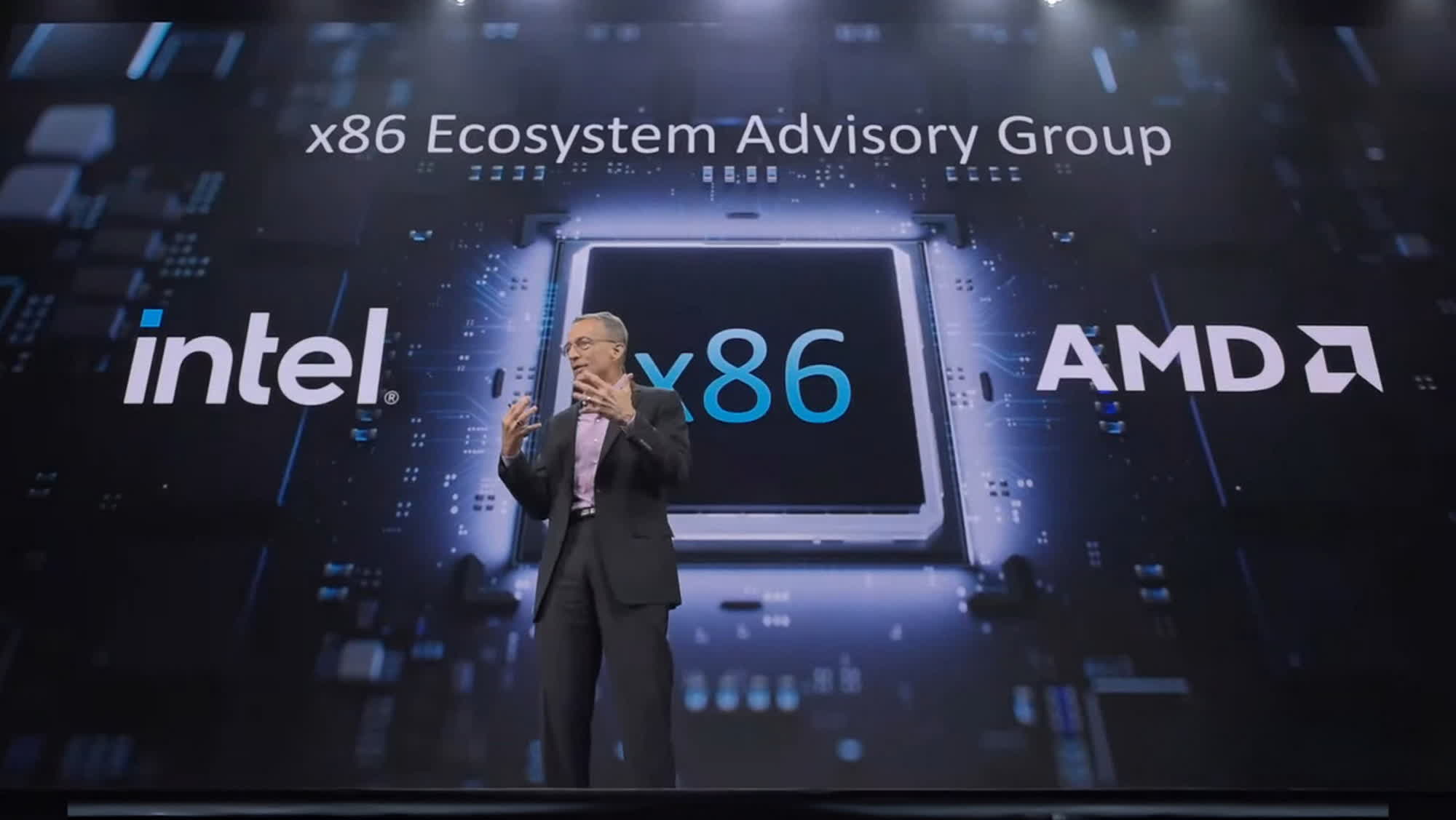Editor’s take: Intel is navigating a pivotal second in its decades-long historical past. The corporate that invented the CPU is presently with out a CEO, shedding 1000’s of staff, and dropping floor to AMD in each gross sales and technological efficiency. On the very least, Chipzilla seems keen to reverse some controversial selections made in recent times, comparable to its unilateral try and simplify the x86 processor with the brand new x86S customary.
A 12 months after unveiling its initiative to introduce a basic know-how shift to the x86 ecosystem, Intel has confirmed that the x86S ISA is formally being discontinued. Whereas the corporate is now specializing in different priorities, it stays “deeply” dedicated to the x86 structure, as demonstrated by its willingness to collaborate with historic opponents like AMD.
Intel introduced the change in a assertion shared with Tom’s {Hardware}. By pivoting away from the x86S initiative, the corporate ensures that future PC CPUs will keep full (theoretical) compatibility with 16-bit and 32-bit purposes from the DOS and Home windows 9x eras. Moreover, Intel plans to work with companions within the newly established x86 Ecosystem Advisory Group to solidify x86 know-how as a common CPU structure.
Initially launched in 2023, x86S ISA was proposed as an completely 64-bit structure. The initiative aimed to get rid of native help for 16-bit and 32-bit x86 code and working methods, whereas nonetheless permitting 32-bit (Win32) purposes to run on fashionable 64-bit working methods. The x86S ISA additionally sought to take away legacy options like 16-bit actual mode, VT-x unrestricted mode, segmentation gates, and different outdated parts.

Intel launched the newest x86S specs (model 1.2) in September, adopted by the formation of the x86 Ecosystem Advisory Group in October. Whereas the 64-bit-only x86S ISA was an Intel-driven initiative, AMD and different trade companions within the advisory group probably had sturdy opinions in regards to the proposal for a “simplified” CISC instruction set structure based mostly on the de facto customary for PC computing because the Seventies.
At 46 years outdated, x86 know-how stays a cornerstone of the computing world, but it surely faces mounting competitors from newer architectures. Arm-based processors like Qualcomm’s Snapdragon X Elite are pushing boundaries within the conventional PC market, presenting an actual problem to the dominance of x86.
By collaborating with AMD, Microsoft, Google, HPE, and different key gamers within the x86 ecosystem, Intel is positioning itself to keep away from repeating previous missteps – such because the infamously criticized Itanium structure.



